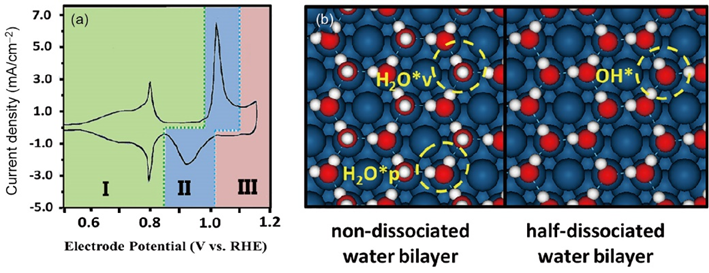The hydrogen and oxygen electrocatalytic reactions are of importance in hydrogen energy system. The corresponding thermodynamics and kinetics crucially determine the energy efficiency and power density of water electrolysis and fuel cells. Theoretical calculations based on quantum chemistry have been extensively used in catalyst design and mechanism studies of these reactions in the past more than ten years. In this perspective, the results and conclusions gained recently, mainly by us as well as others, for hydrogen and oxygen electrocatalysis through theoretical and computational studies are reviewed. We have particularly focused on the surface structures and coverage of the strongly adsorbed intermediates and their effects on the reaction pathway and kinetics. The results show that the adsorption properties of reaction intermediates not only affect the reaction pathways and activation barrier, but also impact the reaction kinetics of surface reactions by altering the structure and density of active sites. This indicates that simple calculation of adsorption energy, as doing in most of recent literatures, is inadequate to accurately predict the activity of catalysts locating near the top of volcano curves, e.g., Pt-based alloys, differently shaped Pt nanoparticles. The effects of coverage and structures of adsorbates should be taken into consideration. Based on such knowledge, micro-kinetic models are established to relate the reaction thermodynamics and kinetics with the surface structures, adsorption energy and coverage of intermediates, and electrode potential. Meanwhile, by utilizing density functional theory (DFT) method, the electrochemical isotherms (the relations between adsorbates’ structures, coverage and the electrode potential) of the key reaction intermediates on catalysts’ surface are computed. The reaction active sites, pathway and kinetics are then identified, with which the dependence between reactive activity and adsorption energy is established. The surface structure and nanoparticle size effects of catalysts are predicted, and some important experimental results are explained.
https://doi.org/10.1360/N032017-00010
